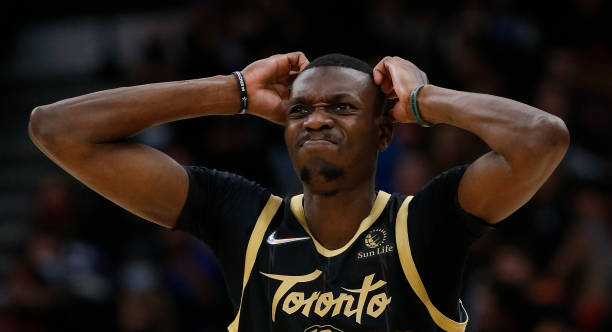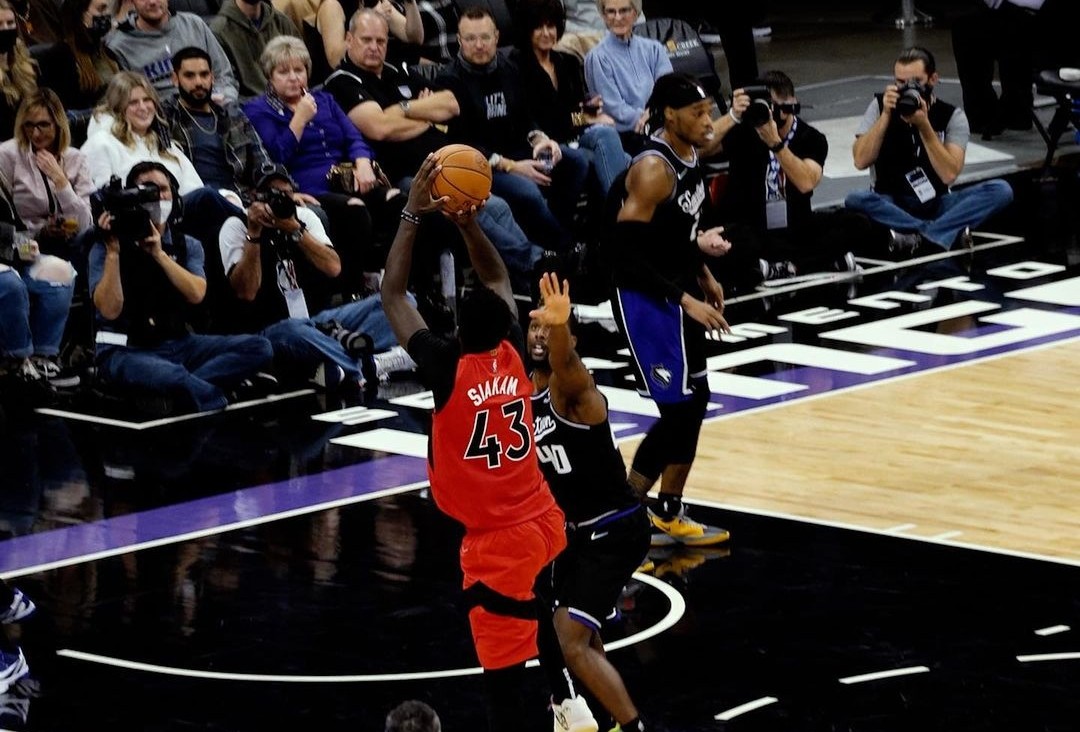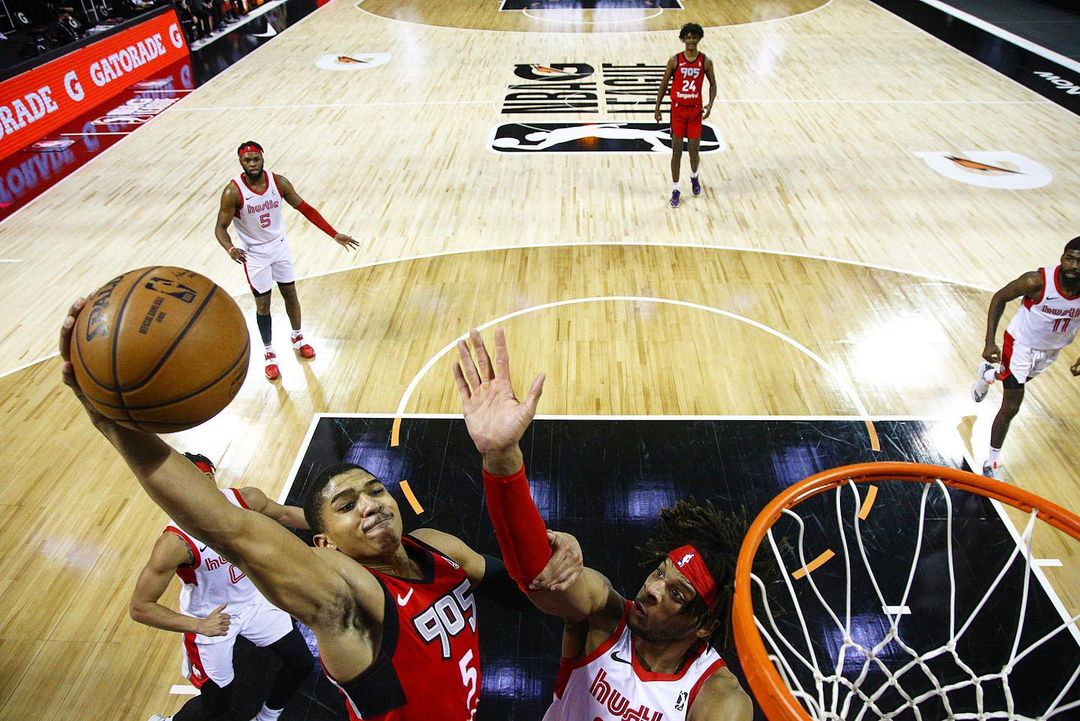It’s possible that a team that relies on contributions from across the roster, that needs a number of players to be generalists (rather than one generalist and a bunch of specialists), can’t handle many absences. Having two centers dressed and ready to go, for example, seems to be critical for the Toronto Raptors’ success. And through 17 games, the numbers seem to be bearing that out: the Raptors are now 7-4 with both Khem Birch and Precious Achiuwa available and 1-5 with one or neither.
That the Raptors are able to survive absences from Pascal Siakam or OG Anunoby is explicable by the fact that Toronto has a glut of wings on the roster, many of whom are stars who can all handle added responsibility when one is missing. But the team is shallow at the big spot.
But with both Birch and Achiuwa playing well against Sacramento, Toronto looked like it rediscovered its identity from the beginning of the season. The defense against Sacramento was fantastic, and it wasn’t just great in patches. Both centers played their roles, with Achiuwa providing an enormous spark off the bench, dunking early out of pick and roll with Fred VanVleet, and playing aggressively with his pass. When Birch returned, he kind of turned into prime Shaq, blocking everything in sight, stripping the ball in transition from various Kings, throwing down putback dunks. To be fair, that’s not going to happen every night, but the benefit of the role diversity was clear.
Birch is probably a better fit with the starters due to his defensive solidity and offensive screen-setting. Achiuwa is probably a better fit with the bench due to his motor and aggression with the ball. For one night, they both filled their roles admirably, making sure the Kings never had a minute with an advantage at the center spot.
That’s the critical component of availability. Toronto can survive — can even win, sometimes! — minutes with Siakam, Anunoby, or even Scottie Barnes at center. But to play 20-plus minutes like that in a game invites disaster. The margins are too thin, the requirements too great for Toronto’s wings on both ends. It’s hard to be an innings-eater pitcher and a flamethrowing strikeout pitcher. Toronto learned that lesson last year, and they seem to be re-learning it again now. Toronto is best served saving their small-ball lineups for short stretches of a few minutes at a time as a proactive weapon rather than a reaction to lack of availability.
But the two centers admirably filling different roles wasn’t the only roster clarification Toronto saw on the night. Gary Trent jr. played a sizeable portion of his minutes alongside Toronto’s bench group, which is a great fit for him. He’s a brilliant scorer against whom defense matters little; he’s either going to make or miss, and that’s up to the flick of his wrist, not the defensive attention. That skill is less useful alongside offensive dynamos like VanVleet or Siakam. Sure, Trent can spot up around them and do plenty of damage as a shooter and attacker of rotations, but his individual scoring ability can lift lesser lineups. And that’s the value of playing him alongside bench groups. Indeed, Trent rained triples and stroked midrange pullups when Siakam and VanVleet were on the bench. He finished with 23 points, proving that he can both lift the floor of starting groups and the ceiling of transitional ones. To that point, Trent actually played the most minutes on the team, with 36.
There were other elements of success that enabled Toronto’s rotations to work. That Chris Boucher played fantastic defense gave the bench groups endless bundles of energy. He blocked two shots and led the team in defensive rebounds, on top of which he was fantastic as a rim runner in transition. When he plays like that, it’s much easier for Toronto to win bench minutes that are track meets rather than grinding, half-court boxing matches. Boucher is a track star and an amateur boxer at best. The bench group ran plays not only to Boucher’s strengths, but also to Dalano Banton’s, Achiuwa’s, and Scottie Barnes’ as well, who spent time with the bench. When the bench is forced to play in the halfcourt, well, that’s why Trent and Svi Mykhailiuk are out there. They’re the failsafe, not plan A.
The benefit is cascading. A successful defense means a successful starting group. And a successful starting group means better staggered bench units, which means better pace, and often, the bench unit winning its minutes. That leads back to the starters having an advantage when they re-enter the floor. Nothing in basketball happens in a vacuum, and Toronto finding rotation success in some areas benefits all areas.
There’s more improvement yet to come. Barnes and Siakam need to find more ways to thrive together. Outside of fastbreaks, the best they looked together was when Siakam drove, drew a crowd, and found Barnes skulking along the baseline for little duck-in passes. That’s great! But it’s too specific to build a fit around, and Barnes looked passive when Siakam went supernova. The rookie needs to add to his game to better complement Toronto’s big guns. (Anunoby should help there due to his shooting and versatility.)
But the point is that it’s early. It took Toronto more than a dozen games to best figure out its center rotation, which is fine. Lessons should take time, or else teams will be overreactive, and players will never find consistency. Going forward, I expect Birch to remain a starter and Achiuwa to remain a bench player. Barnes is a rookie, and he has plenty of time to learn to make those fits more snug. This isn’t a criticism so much as a look forward into the areas in which he can grow.
Similarly, VanVleet needs a legitimate backup. Dalano Banton has been excellent as a rookie, but he’s been best deployed alongside another point guard. Despite playing well virtually every time he touches the floor, Malachi Flynn can’t get consistent minutes. (It’s possible that Trent is going to run point when VanVleet sits, which I don’t actually hate.) But Toronto needs to find ways to win minutes when VanVleet sits. That’s a tough problem to solve.
But all in all, the picture is starting to come together. There’s more to come, of course. There will certainly be more losses, and likely even some losing streaks! That happens. Don’t panic. The team as a collective is slowly starting to figure out how this thing is supposed to go.



